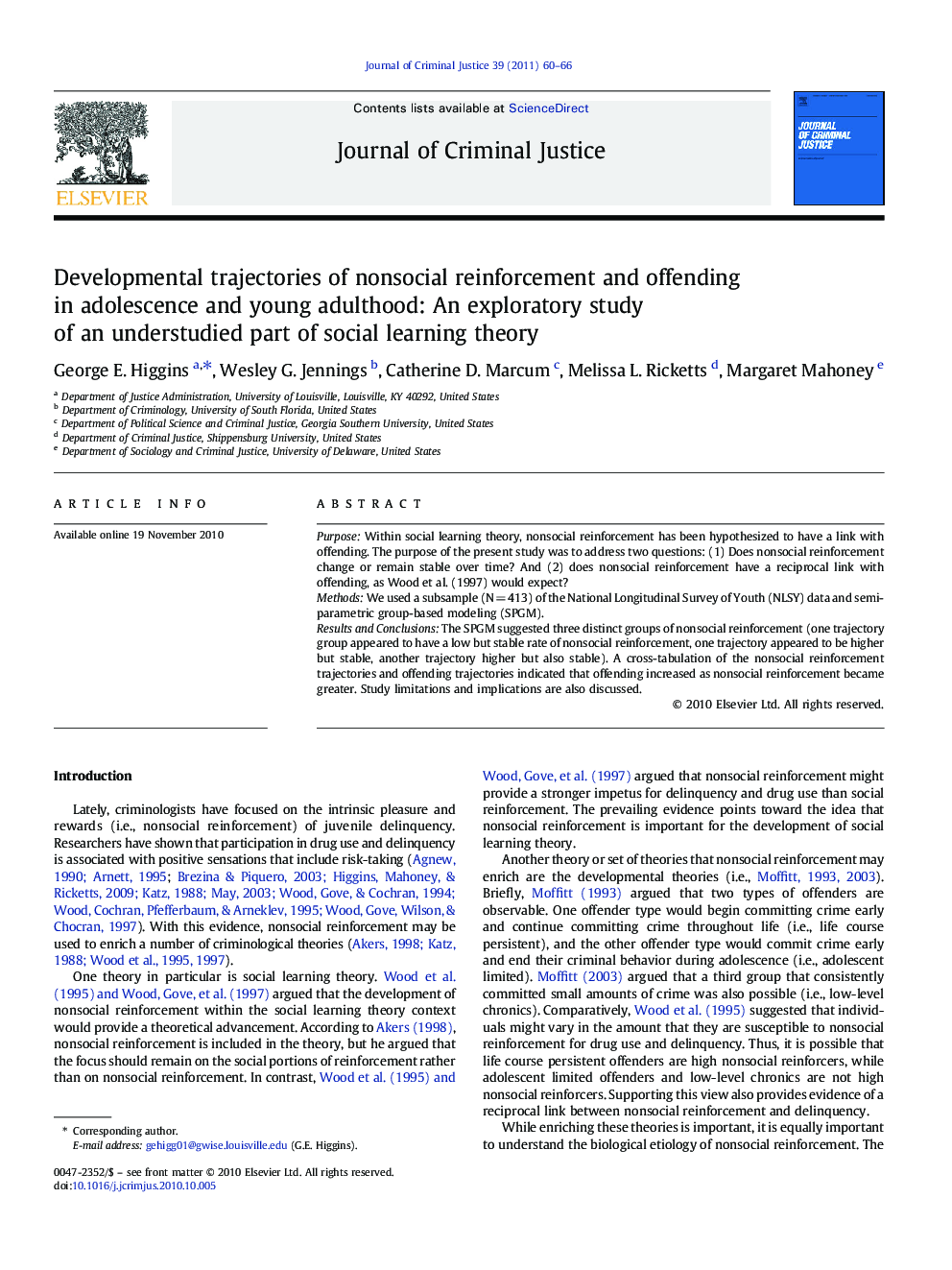| کد مقاله | کد نشریه | سال انتشار | مقاله انگلیسی | نسخه تمام متن |
|---|---|---|---|---|
| 883095 | 912044 | 2011 | 7 صفحه PDF | دانلود رایگان |

PurposeWithin social learning theory, nonsocial reinforcement has been hypothesized to have a link with offending. The purpose of the present study was to address two questions: (1) Does nonsocial reinforcement change or remain stable over time? And (2) does nonsocial reinforcement have a reciprocal link with offending, as Wood et al. (1997) would expect?MethodsWe used a subsample (N = 413) of the National Longitudinal Survey of Youth (NLSY) data and semi-parametric group-based modeling (SPGM).Results and ConclusionsThe SPGM suggested three distinct groups of nonsocial reinforcement (one trajectory group appeared to have a low but stable rate of nonsocial reinforcement, one trajectory appeared to be higher but stable, another trajectory higher but also stable). A cross-tabulation of the nonsocial reinforcement trajectories and offending trajectories indicated that offending increased as nonsocial reinforcement became greater. Study limitations and implications are also discussed.
Research Highlights
► Nonsocial reinforcement has three distinct groups.
► Nonsocial reinforcement and delinquency has a reciprocal effect.
► Nonsocial reinforcement complements Akers’s and Moffitt’s theories.
Journal: Journal of Criminal Justice - Volume 39, Issue 1, January–February 2011, Pages 60–66